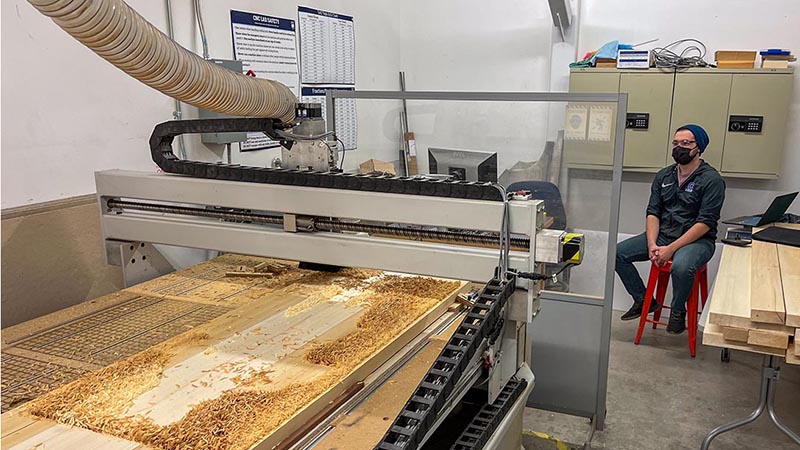
Cutting-edge tech powers creativity at the Innovative Media Research and Commercialization Center
Watch how artists at the center create chivalric sculptures and entomology-inspired dance videos.
by Erin Miller; UMaine News story by Marcus Wolf; Scholar’s Dream video by Devin Rowe
The Innovative Media Research and Commercialization (IMRC) Center at the University of Maine unites science and technology with the arts to help students practice collaboration through creative projects. IMRC’s resources offer students skilled staff to guide them as they use the center’s research and prototyping labs, makerspaces, audiovisual production facilities and performance spaces. Art developed through this hotbed of student innovation reaches far beyond campus.
A life-sized knight sculpture crafted at the IMRC Center for History Live North East will soon embark on a tour of K-12 classrooms across Maine to make life in medieval times more tangible to the students. The five-and-a-half-foot-tall statue was sculpted from poplar wood sourced from Kings Mountain Hardwood in Orrington, Maine, and shaped using 3D scanning and layered Computer Numerical Control (CNC) machining, coupled with traditional sculpture methods. The project took staff engineers and students two-and-a-half years to take the project from concept to reality. The full story on the sculpture is on the UMaine News website. A video about its creation process is available online.
In the IMRC Center’s production studio, Devin Rowe, a Ph.D. student in the lab of UMaine forest entomologist Angela Mech, transformed his dissertation research into a dance video inspired by the silent film era. Rowe entered “The Scholar’s Dream” in an international “Dance Your Ph.D.” contest hosted by Science Magazine, the academic journal of the American Association for the Advancement of Science.
In it, Rowe personifies the itchy issues posed by browntail moth caterpillars and how his research investigates pheromones that could be used to monitor and thwart moth mating. He also explores Mainers’ opinions towards this approach and other browntail moth management methods.
“My film required a specific setting – a location with ample space and enough lighting to properly light a large green screen. The IMRC’s ‘Fernald Adaptive Presentation & Performance Environment’ proved to be an ideal match,” Rowe says. “My vision would not have been possible without the IMRC’s facilities and the dedicated staff who provided technical support!”
Watch “The Scholar’s Dream” in the following video.
